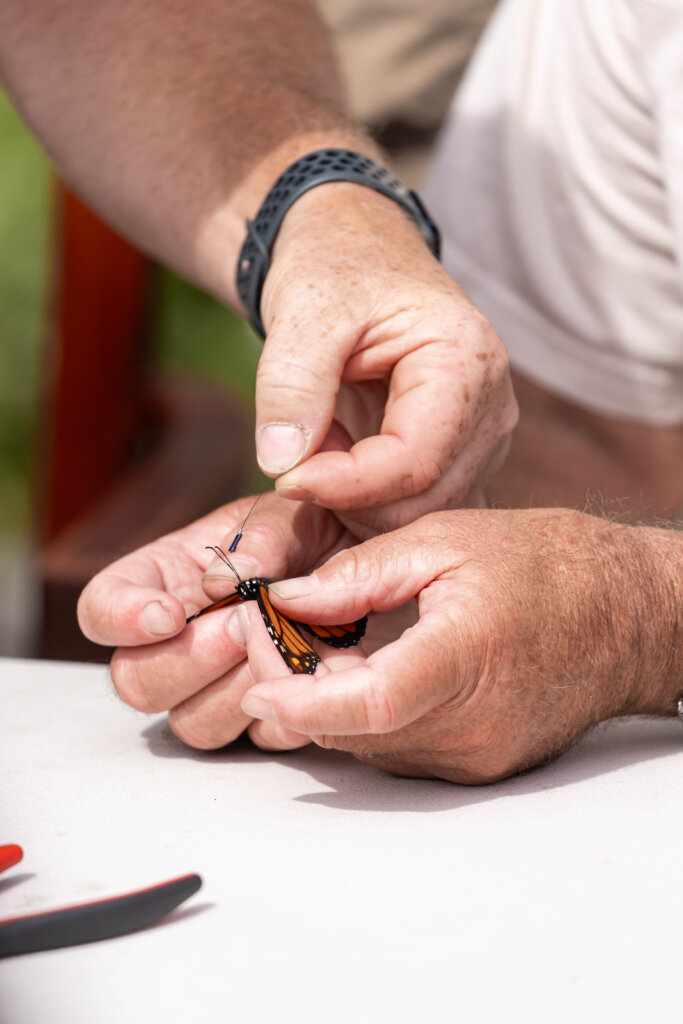CAPE MAY POINT – The Cape May Point Science Center (CMPSC) along with Cellular Tracking Technologies (CTT) launched Project Monarch on September 21st in the courtyard pollinator garden of the science center.
A drop of eyelash glue is all it takes to attach the world’s smallest solar-powered tracking device to the thorax of a monarch butterfly. However, it will take a team of community scientists to help track the monarchs on their epic migration to Mexico.
These revolutionary tracking devices were developed by Cellular Tracking Technologies, a wildlife telemetry company based in Cape May, NJ. The devices weigh about as much as a grain of rice – making them light enough for a butterfly to carry – and transmit over the same frequency as Bluetooth, allowing them to be detected by a smartphone.
By utilizing a free smartphone app called Project Monarch (available on iOS and Android), members of the public can become community scientists themselves and search for monarchs, then upload any observations.
The data generated by community scientists using the app will allow scientists to track the movements of monarch butterflies in detail never previously imagined, including how monarchs utilize key stopping points along migratory routes, as well as details about the speed and direction of migration, helping identify the most important sites for habitat conservation and restoration. Ultimately, this technology can help guide conservation planning and lead to increases in monarch populations.
A crowd of over one hundred members of the local community gathered around a folding table to watch the glue dry and the newly-tagged butterflies take flight.
Meanwhile, the sounds of smartphone pings were heard throughout CMPSC’s courtyard as people using the Project Monarch app climbed the detection leaderboard. In total, 10 butterflies were tagged at the launch event; however, CMPSC has plans to release over 100 tags this season. Stay tuned to CMPSC’s Facebook and Instagram pages to get the latest information on upcoming public tagging demos.







